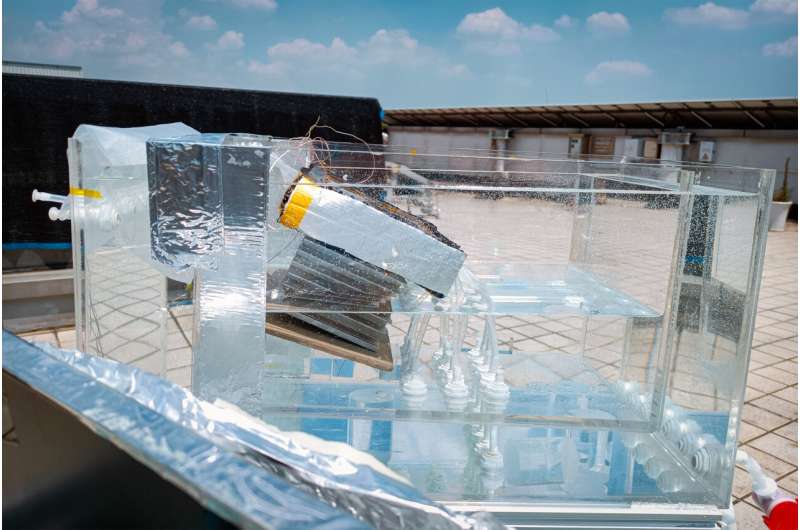Many different things come together to define human beings, and yet none do a better job of it than our tendency to get better under all circumstances. This commitment towards improving, no matter the situation, …
Many different things come together to define human beings, and yet none do a better job of it than our tendency to get better under all circumstances. This commitment towards improving, no matter the situation, has brought the world some huge milestones, with technology emerging as quite a major member of the group. The reason why we hold technology in such a high regard is, by and large, predicated upon its skill-set, which ushered us towards a reality that nobody could have ever imagined otherwise. Nevertheless, if we look beyond the surface for one hot second, it will become abundantly clear how the whole runner was also very much inspired from the way we applied those skills across a real world environment. The latter component, in fact, did a lot to hand the creation a spectrum-wide presence, and as a result, initiated a full-blown tech revolution. Of course, the next thing this revolution did was to scale up the human experience through some outright unique avenues, but even after achieving a feat so notable, technology will somehow continue to bring forth the right goods. The same has turned more and more evident in recent times, and assuming one new discovery ends up with the desired impact, it will only put that trend on a higher pedestal moving forward.
The researching at Massachusetts Institute of Technology has successfully developed a new solar desalination system, which is designed to turn seawater into drinking water in a sustainable manner. Boasting the means to take in seawater and then heat it using sunlight, the device comes bearing a mechanism where water effectively circulates in swirling eddies, boasting uncanny similarities with how the “thermohaline” circulation of the ocean takes place. Now, when you combine such a circulation with sun’s heat, it makes the water evaporate, leaving all the salt of seawater behind. Next up, the resulting water vapor can then be condensed to form safe drinkable water. The development follows up on an earlier effort from the team. Although that concept also leveraged solar power to do the job, it suffered from a major limitation that ensured the leftover salt would quickly accumulate as crystals and clog the system just after a few days. Then, the researchers tested another design, only this one had the ability to circulate the incoming water as well as any leftover salt. However, the problem here was that the second concept would desalinate water at a relatively slower rate. Fortunately enough, the latest iteration takes care of both by effectively delivering a high water-production rate, and high salt rejection, at the same time. Talk about how the device does so, its bets on a single stage that resembles a thin box, topped with a dark material that efficiently absorbs the heat of the sun. Inside, though, the box is separated into a top and bottom section, allowing water to flow through the top half, where the ceiling is lined with an evaporator layer that uses the sun’s heat to warm up and evaporate any water in direct contact. Once the said bit is done, the water vapor is funneled to the bottom half of the box, which notably houses a condensing layer to air-cool the vapor and transform it back into liquid, liquid without any seawater salt.
“When seawater is exposed to air, sunlight drives water to evaporate. Once water leaves the surface, salt remains. And the higher the salt concentration, the denser the liquid, and this heavier water wants to flow downward. By mimicking this kilometer-wide phenomena in small box, we can take advantage of this feature to reject salt,” said Lenan Zhang, a research scientist in MIT’s Device Research Laboratory.
Complimenting the same is a specialized structure that the researchers used to facilitate a rather smooth operation. You see, the team set the entire box at a tilt within a larger empty vessel before attaching a tube from the top half of the box down through the bottom of the vessel, and floating the vessel in saltwater. Such a structure allowed water to naturally push up through the tube and into the box, where the tilt of the box, combined with the thermal energy from the sun, induced the water to swirl as it ambled through. The emerging small eddies would bring water in contact with the upper evaporating layer, while simultaneously keeping salt circulating rather than settling and clogging.
In order to reach the best possible formula, the researchers built several prototypes, with one, three, and 10 stages. Furthermore, the team tested their performance in water of varying salinity, including natural seawater and water that was seven times saltier. Going by the available details, these tests informed researchers that, if each stage were scaled up to a square meter, it would produce up to 5 liters of drinking water per hour, and it can do so without accumulating salt for several years. Hence, take the extended lifetime into account, alongside the fact that this technology mandates the use of no technology whatsoever, and you have an operation which is actually cheaper than what it costs to produce tap water in the United States right now.
For the immediate future, the team plans to scale up the system enough to meet the daily requirements of a small family.




